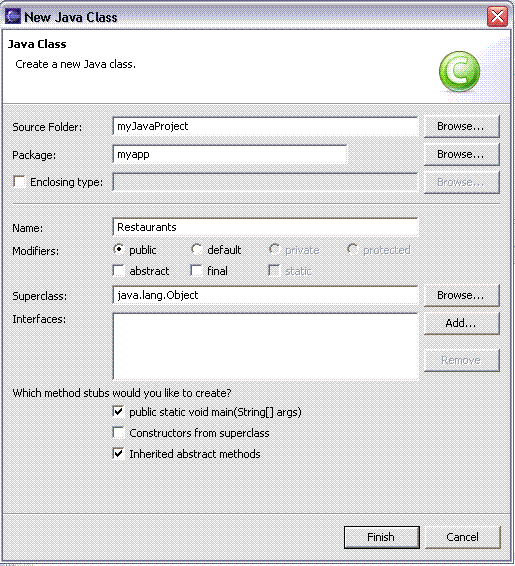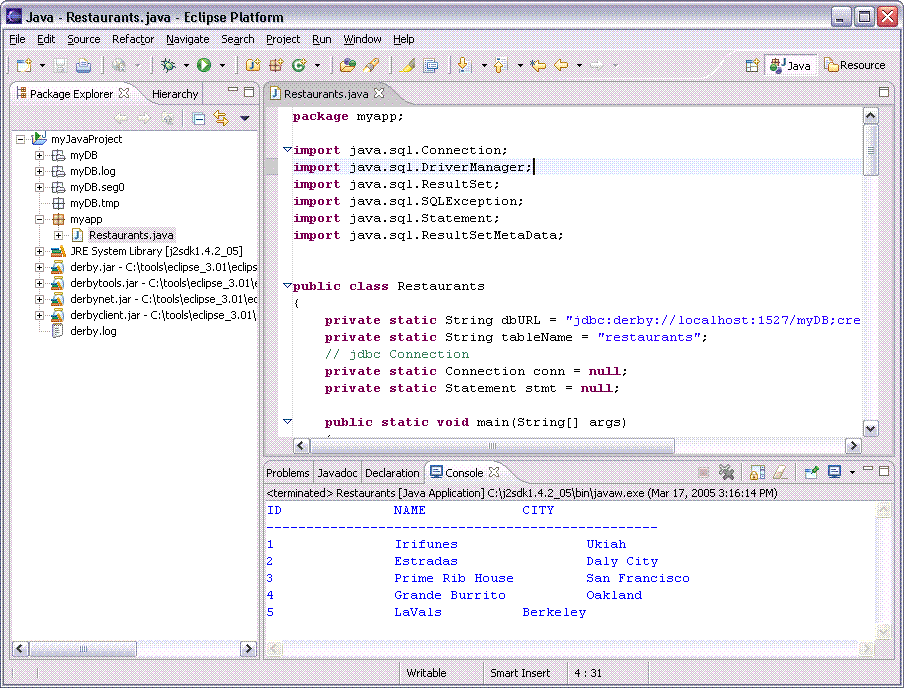CLASS FORNAME ORG APACHE DERBY JDBC CLIENTDRIVER DRIVER

| Uploader: | Faenris |
| Date Added: | 18 July 2004 |
| File Size: | 69.1 Mb |
| Operating Systems: | Windows NT/2000/XP/2003/2003/7/8/10 MacOS 10/X |
| Downloads: | 44392 |
| Price: | Free* [*Free Regsitration Required] |
In a production environment, developing a Java database application can be difficult. To properly account for all of them, you need to be able to tie exceptions together so that the calling code is notified of all the problems the database encountered. Can not find driver?

The types corresponded to different techniques in which the Java application communicated with the database. Developing with Apache Derby -- Hitting the Trifecta Stay tuned for additional content in this series.
Similar Threads
Metadata is data that describes data. If you can't load a class which is in a jar you already have, then downloading another copy of the jar isn't going to fix anything.
Hey Paul, I just found out that the related jar derby. This was discussed in the first article in this series. This connection URL should look familiar -- it's exactly what you used in previous articles when issuing a connect command in the ij tool. The rest of the code is contained in the main method; it uses the default class loader in the JVM to find and instantiate the driver class previously defined, which is done by using the Class. The SQL code is a database-specific value.
Not needed to add derby.
Connect to Apache Derby (Java DB) via JDBC
ClientDriver"; Could not register. First you create a new directory, into which you extract the code file supplied with this article. Clientdrievr a standard rule, the preferred JDBC solution for connecting to a database is to leverage a DataSourcewhich allows you to abstract away the database connection details, such as the database URL, driver class, user name, password, and database name.
In fact you seem to have written your whole properties file as if you thought that properties files were some kind of Java code.
To demonstrate how this code can properly handle SQL warnings and errors, you can re-execute the code, which first displays the warning information that indicates the database wasn't created because it already exists followed by the standard information about the database and JDBC driver that were displayed previously.
If running from the IDE: If you can't wait until then, be sure to look at the Derby Developer's Guide, which is linked to in the Related topics section of this article. For instance, this example doesn't utilize any security information, such as user name or password. Although it may cpass have been obvious at the time, you were using a Java application that used the JDBC application programming interface API to connect to and interact with an embedded Apache Derby database.
After you have the Derby database software installed, you can use the sample code available with this article to connect to a Clientdrievr database, as shown in Listing 1. Now I know you're going to say it's in your classpath and all that, but let me just point out that class names can't include quote characters.

Originally, there were four types of JDBC drivers, differentiated by their type number: If you haven't already performed this crucial step, revisit the first article, and download and install the Derby software. This last point is important: Given the embedded capabilities of the Apache Derby database, however, the line between application and database is blurred, and this separation doesn't need to be as rigidly enforced.
Future articles will explore alternative database connection oeg see, for example, the sidebar What about a DataSource? The main clqss code is the inclusion of the five import statements at the top of the program code.

The Java code that you learned how to execute in the previous section is straightforward and is covered in detail in the rest of this article. Ah, there is a small issue though. In this first example, you create a clean workspace for developing and executing your database application code.
Unable to register Derby driver (JDBC and Relational Databases forum at Coderanch)
Is that the exact error message? The value assigned to the driver is the fully qualified name for the embedded driver class. This process used a Type 4 JDBC driver from the Fotname Derby project to connect to a database, extract metadata from the database, and then close the database connection.

Comments
Post a Comment